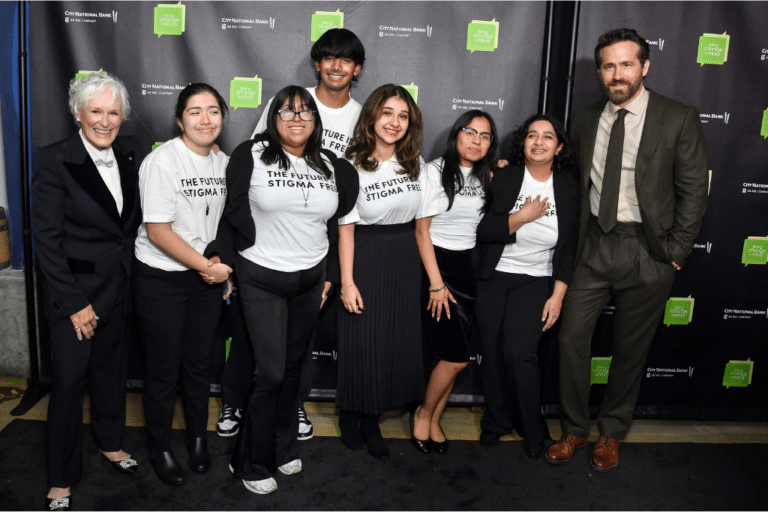
Many international students intend to secure US permanent residency.
Research has shown that 100,000 international graduates of US colleges and universities each year would like to stay and work permanently in the US.
But securing permanent residency, let alone a US green card, is easier said than done.
Data shows that 88% of international students who have gained permanent residency had to go through multiple temporary permit streams and hold multiple permits — an issue that can “increase vulnerability” among those determined to achieve this goal, CBC reports.
A new piece of legislation could change the tide for advanced STEM (short for science, technology, engineering and mathematics) degree holders eyeing a US green card.
Introduced earlier this year by bipartisan lawmakers, including US representatives Bill Foster, Mike Lawler, Wiley Nickel and Sylvia Garcia, the Keep STEM Talent Act seeks to make certain advanced STEM degree holders eligible for permanent resident status.
It would also allow them to remain in the US following their graduation and remove barriers for them to work in the country, PIE News reports.
“This will enable them to contribute to our economy and help America retain its position as the world leader in science and technology,” says Congressman Mike Lawler.

The US is home to many world-class institutions. Source: AFP
4 reasons why the US is a good place to pursue a career in STEM
Home to some of the finest universities in the world, the country boasts high academic standards and excellent education.
Look at the QS World Ranking 2023, for example. One in every top four institutions comes from the US.
Some of the most prestigious and sought-after universities known for their STEM courses include Harvard, Columbia, Brown, Cornell, UPenn, Princeton, and Yale.
Beyond this, there are more reasons why the Land of the Free has become a popular study-abroad destination for international students who wish to pursue a career in STEM.
1. Increasing demand for STEM professionals
The need for a vast, talented workforce in STEM-related fields has never been more necessary, said Bridget Long, dean of the Harvard Graduate School of Education.
Long cited the US Bureau of Labor Statistics, which shows employment in STEM occupations has grown 79% in the past three decades.
STEM jobs are also projected to grow an additional 11% from 2020 to 2030.
In Massachusetts alone, “40% of all employment revolves around innovation industries, such as clean energy, information technology, defence and advanced manufacturing,” said Long.
With the explosive growth of generative artificial intelligence (AI) technology, the demand for data analysts, data scientists, artificial intelligence, and machine learning specialists has increased as well.
2. Continued focus on science and tech
Congressman Bill Foster shares: “We must expand America’s STEM workforce to compete in the global economy.”
Since the 1980s, the country’s STEM proficiency has been declining — threatening the nation’s continued technological leadership, which is concerning in an era defined by emerging technologies, such as quantum computing and AI.
“Our country gives international STEM students world-class educations, only to turn them away when they want to stay in the US after graduation and contribute their skills to our economy,” says Foster.
He adds that allowing these graduates to stay would help put the US on the cutting edge of scientific research and technological development and create “good-paying American jobs along the way”.
In recent years, there have been initiatives to improve STEM focus within the country:
- During the 2020 fiscal year, the Department of Education awarded US$141 million in new grants and US$437 million to continue existing projects that are making substantial progress toward their goals.
- Congress passed a government funding bill for the 2023 fiscal year with US$284 million in funding for Education, Innovation, and Research (EIR) Programmes — a 21% increase above the previous year’s.
- US corporations are investing US$350 billion annually in education (mostly STEM), more than 100 times the scale of former President Barack Obama’s unprecedented US$3 billion STEM initiative.

Advanced STEM degree holders are eligible for OPT extension. Source: AFP
3. Visa extension for graduates of STEM courses in the US (OPT)
Currently, international graduates can stay and work in the US under the Optional Practical Training (OPT) programme — a temporary employment programme directly related to one’s area of study in university.
The OPT can extend up to 12 months, but graduates of specific courses in STEM (Science, Technology, Engineering and Mathematics) can request a 24-month extension to their OPT.
The US will add eight new qualifying fields of study for international students seeking practical work experience in the country. The change was announced on July 12, 2023, via a Federal Register notice by the Department of Homeland Security (DHS).
The eight new fields of study include:
- landscape architecture
- institutional research
- mechatronics, robotics and automation engineering technology/technician,
- composite materials technology/technician,
- linguistics and computer science
- developmental and adolescent psychology
- geospatial intelligence
- demography and population studies.
These new fields will all be added to the science, technology, engineering, and mathematics Optional Practical Training, or STEM OPT, programme.
The announcement allows more international students to stay and work in the US, at least temporarily, when Canada and other nations seek to lure away high-skilled foreign nationals.
4. Silicon Valley for graduates of STEM courses in the US
California, often dubbed the Silicon Valley of the US, stands out as a prime destination for international students pursuing STEM courses.
Silicon Valley boasts a unique ecosystem of tech giants, startups, venture capitalists, and research institutions. The region is known for its entrepreneurial spirit, making it an ideal breeding ground for cutting-edge ideas.
For example, it is home to industry giants such as Apple, Alphabet (parent company of Google), Microsoft, and Meta (formerly known as Facebook).
Many of these companies provide attractive training and internship opportunities for international students, including programmes like the Google Summer Internship and Microsoft Internship.

The US is home to household names in tech, like Apple. Source: AFP
Political hurdles might spoil plans for STEM graduates to secure US permanent residency
The US international education sector has welcomed legislation that seeks to keep STEM graduates in the US.
However, concerns remain that political hurdles and a possible government shutdown will make the legislation difficult to pass.
Speaking on behalf of the Association of International Education Administrators, Barsoum explained that the bill could be “difficult to pass” given the government shutdown looming and “the economy and inflation on everyone’s mind”.
“While this bill is a welcomed piece of legislation that would keep the best and the brightest graduates in the US, I am sure it will face many hurdles in Congress,” Barsoum said.

Political hurdles could prevent this new law from coming to life. Source: AFP
A government shutdown means suspension of many government operations until Congress acts to restore funding. This can lead to many problems, such as affecting the funding and support systems necessary for programmes designed to attract and retain STEM graduates.
It may also create a sense of uncertainty among international students, making them hesitant to invest in education within the US if they fear that their career prospects may be jeopardised due to political instability.
Inflation and economic concerns can indirectly affect STEM graduates’ decisions to stay in the US.
The Consumer Price Index, a closely watched inflation gauge, rose 3.7% in August, slightly hotter than economists’ expected 3.6% annual rate. On a month-to-month basis, prices rose 0.6% in August, compared with a 0.2% gain in July.
Such figures can weaken the purchasing power of salaries and affect the overall cost of living, making it less attractive for STEM graduates to settle in the country.










